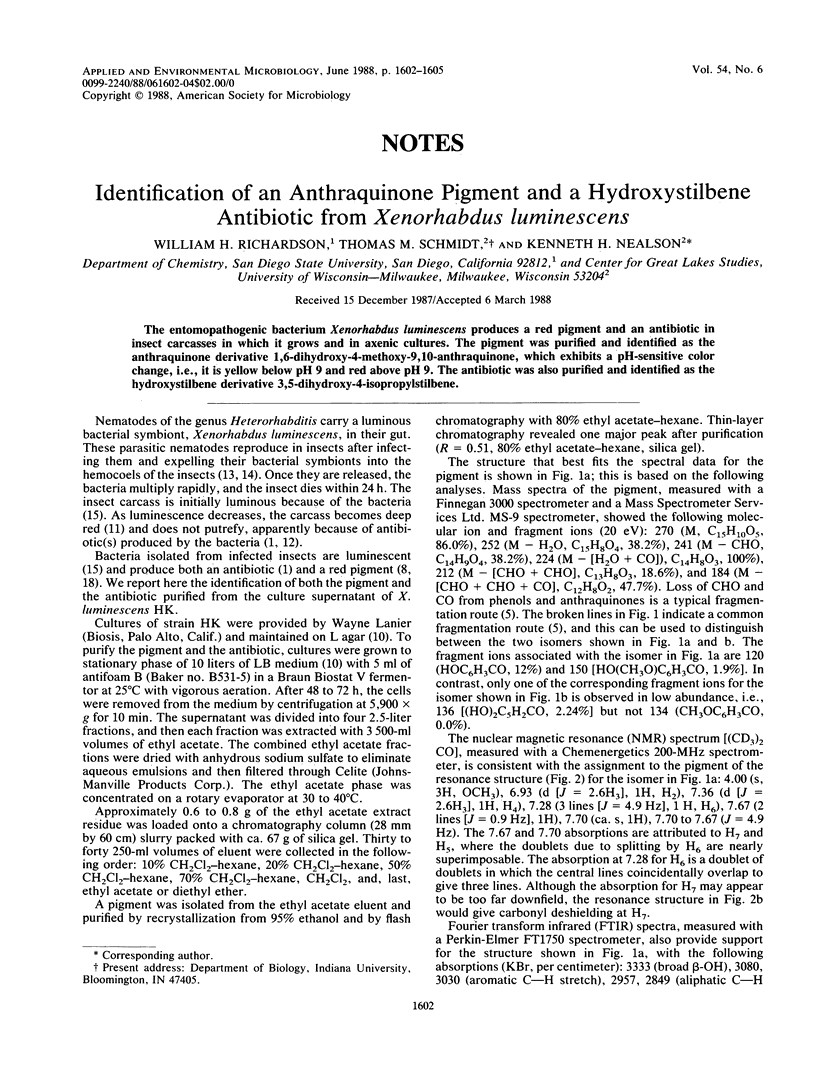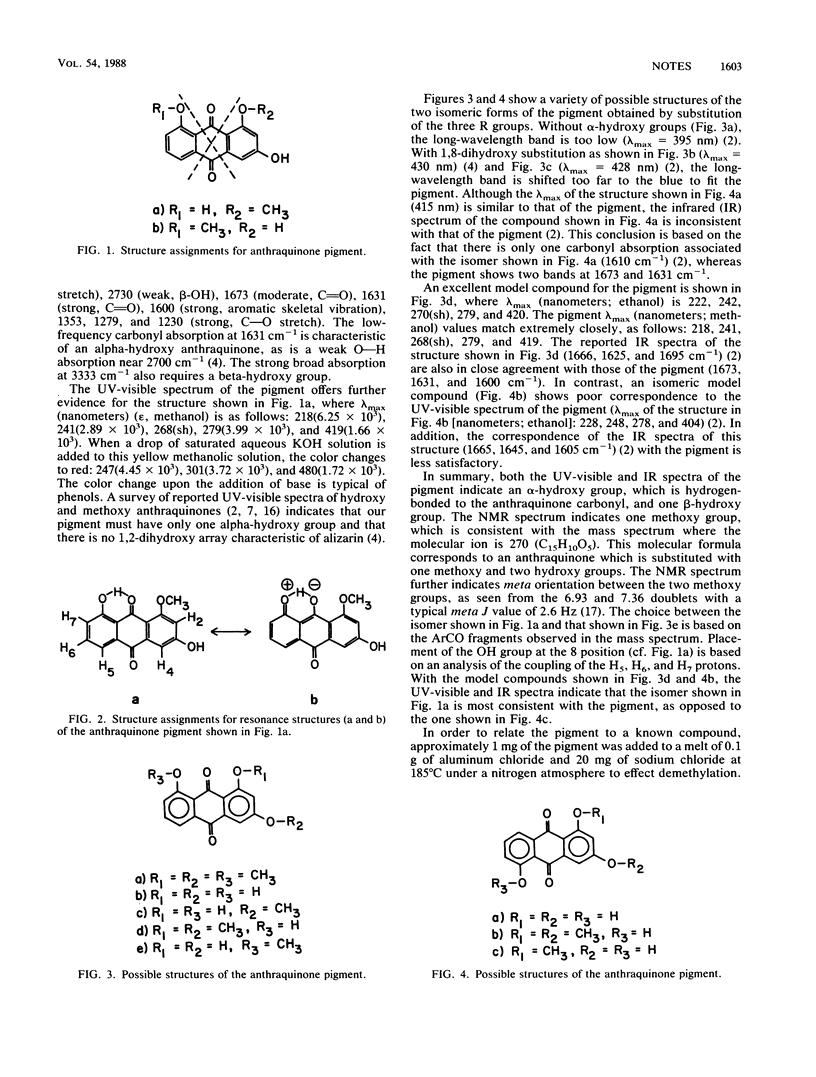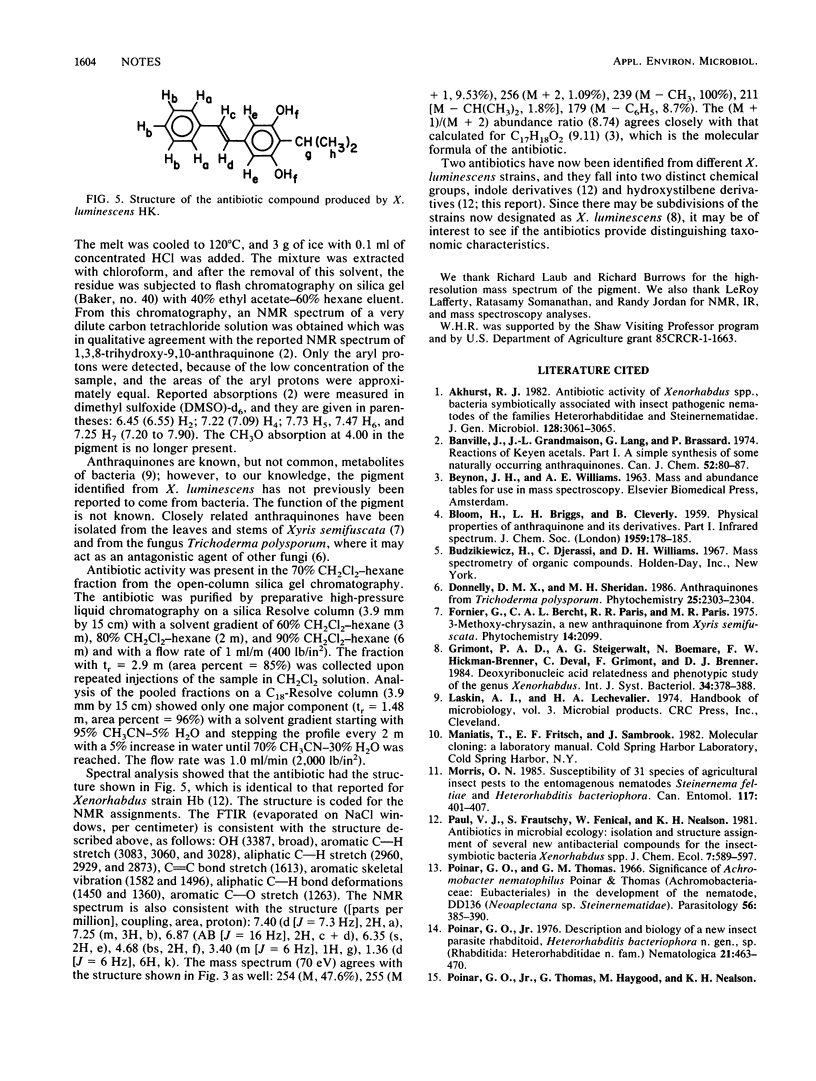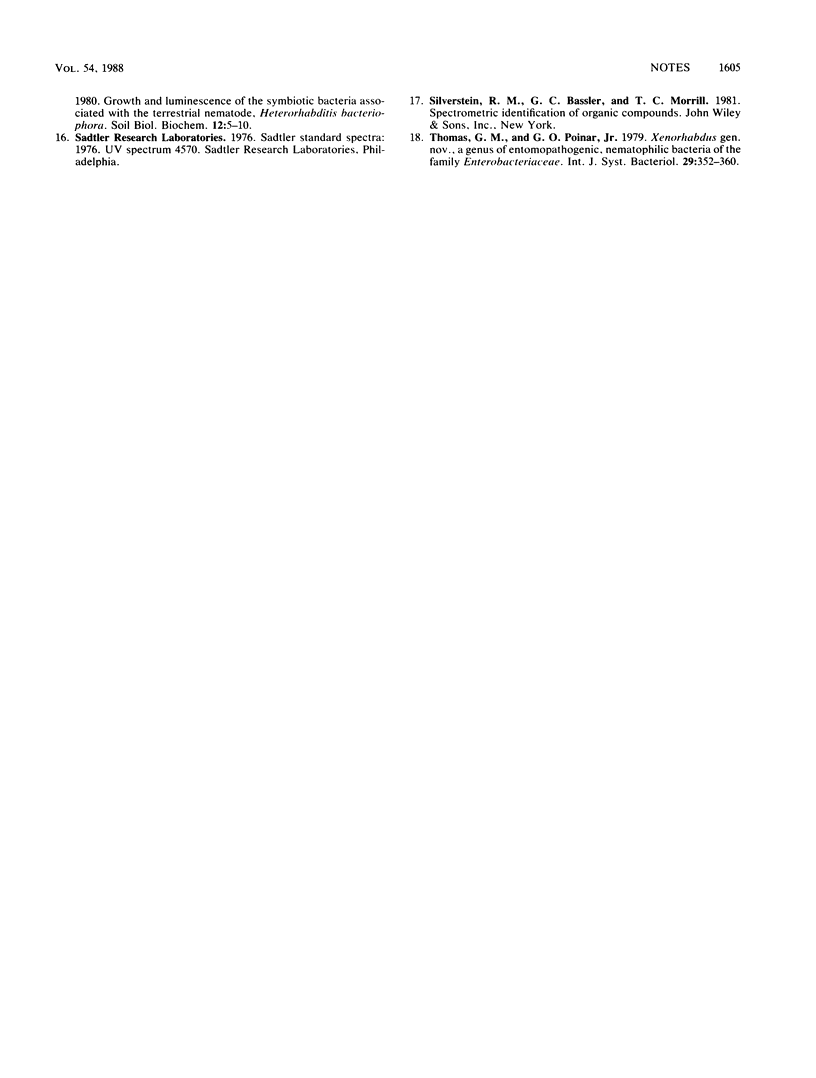Abstract
The entomopathogenic bacterium Xenorhabdus luminescens produces a red pigment and an antibiotic in insect carcasses in which it grows and in axenic cultures. The pigment was purified and identified as the anthraquinone derivative 1,6-dihydroxy-4-methoxy-9,10-anthraquinone, which exhibits a pH-sensitive color change, i.e., it is yellow below pH 9 and red above pH 9. The antibiotic was also purified and identified as the hydroxystilbene derivative 3,5-dihydroxy-4-isopropylstilbene.
Full text
PDF



Selected References
These references are in PubMed. This may not be the complete list of references from this article.
- Akhurst R. J. Antibiotic activity of Xenorhabdus spp., bacteria symbiotically associated with insect pathogenic nematodes of the families Heterorhabditidae and Steinernematidae. J Gen Microbiol. 1982 Dec;128(12):3061–3065. doi: 10.1099/00221287-128-12-3061. [DOI] [PubMed] [Google Scholar]
- Poinar G. O., Jr, Thomas G. M. Significance of Achromobacter nematophilus Poinar and Thomas (Achromobacteraceae: Eubacteriales) in the development of the nematode, DD-136 (Neoaplectana sp. Steinernematidae). Parasitology. 1966 May;56(2):385–390. doi: 10.1017/s0031182000070980. [DOI] [PubMed] [Google Scholar]


